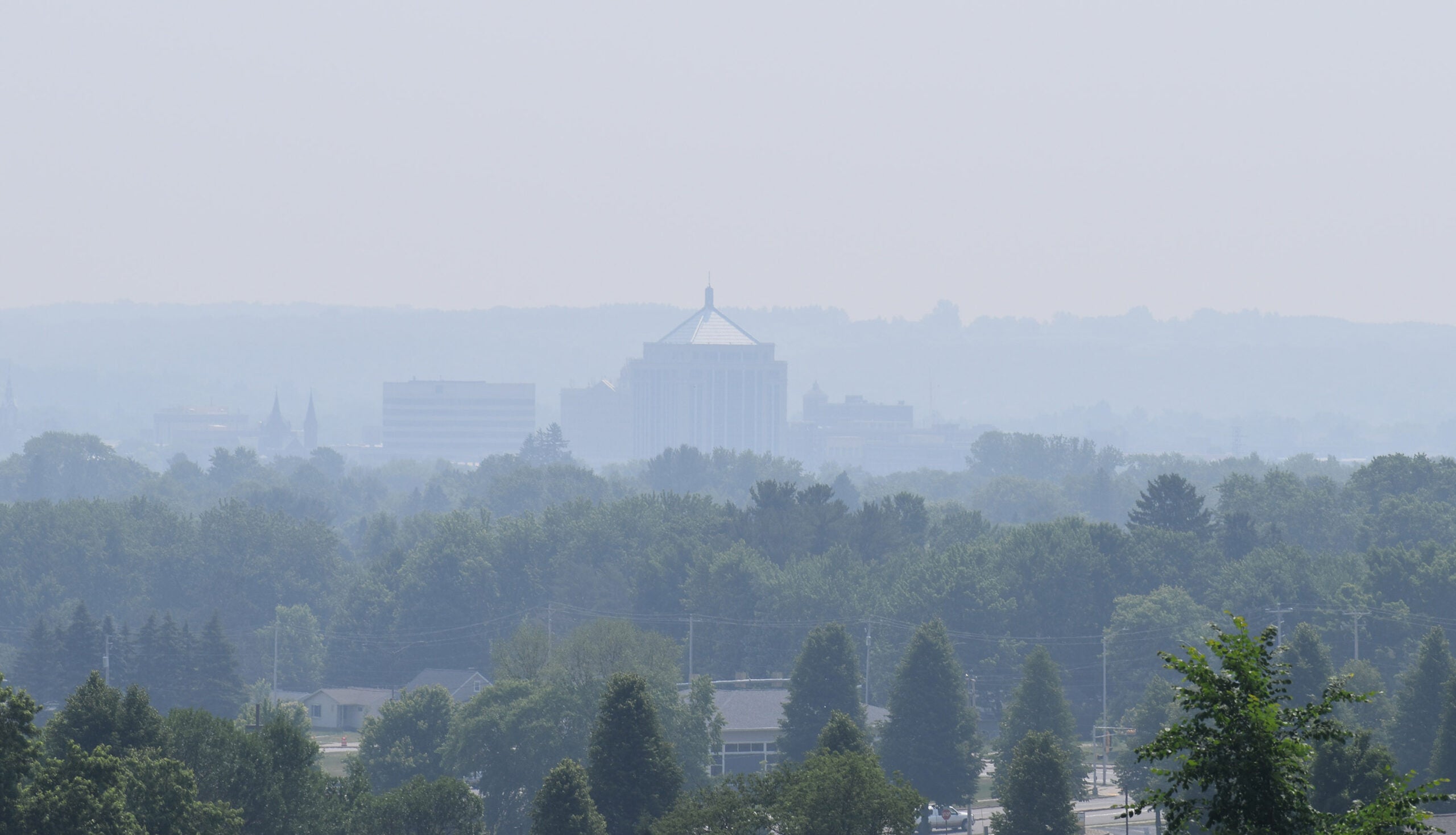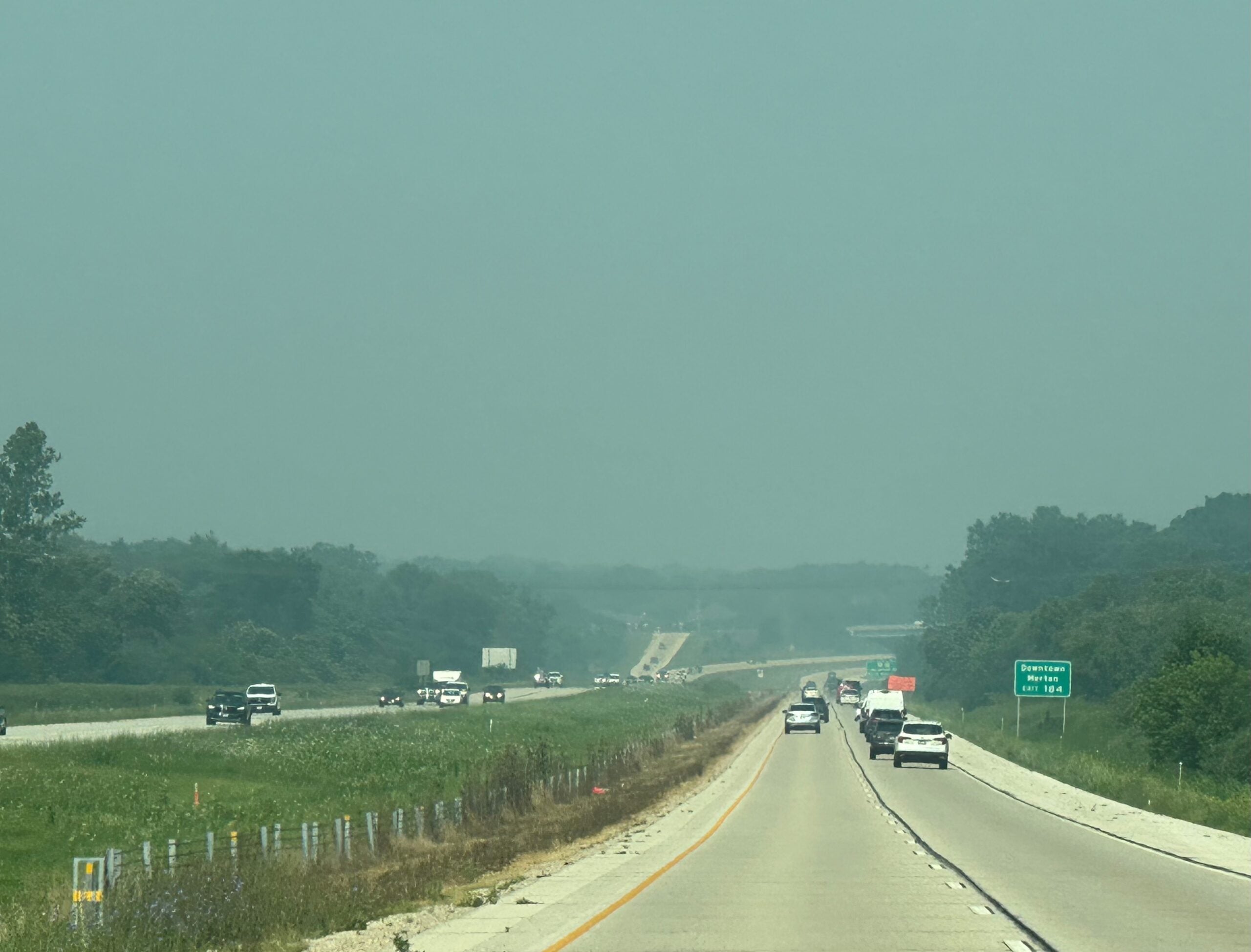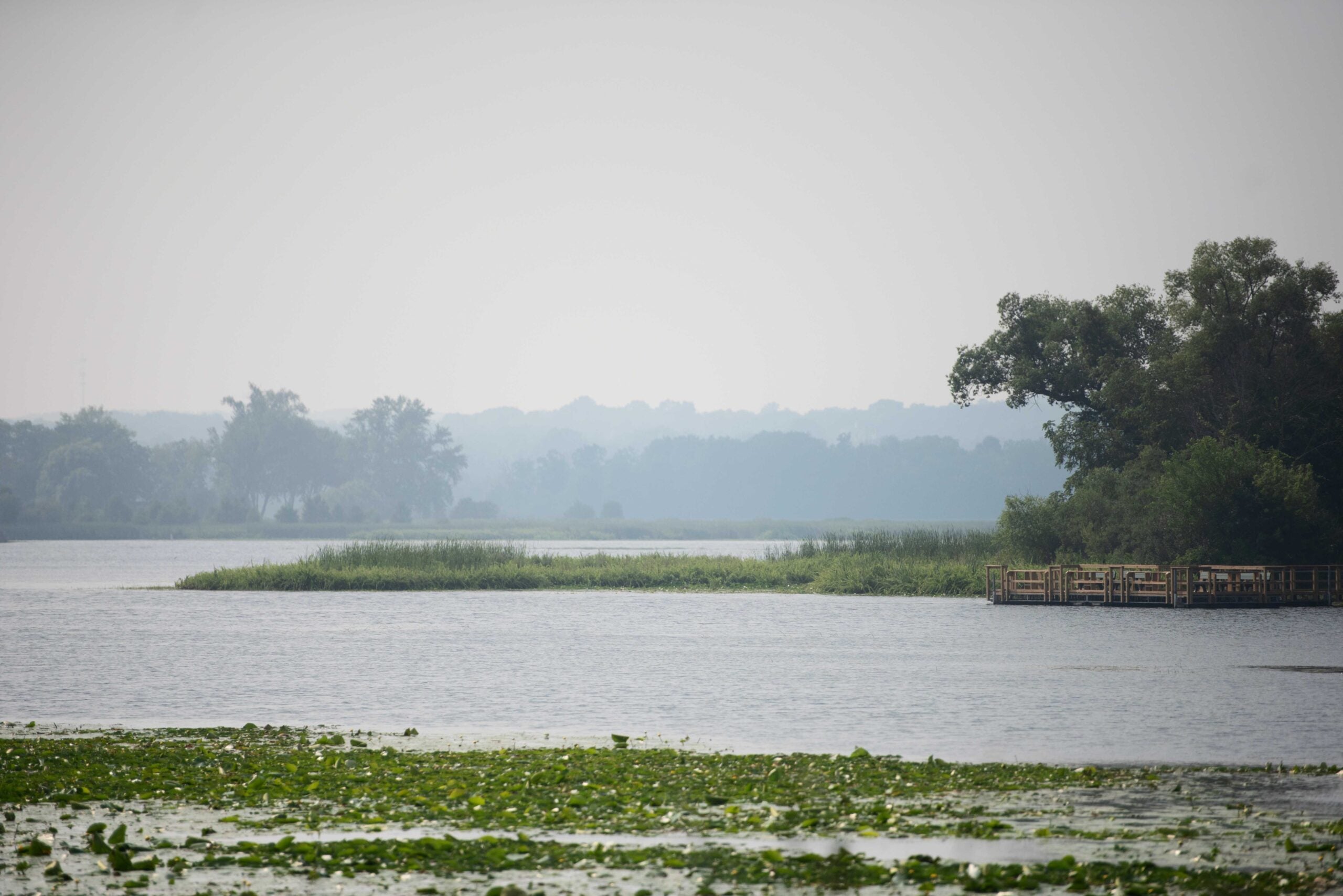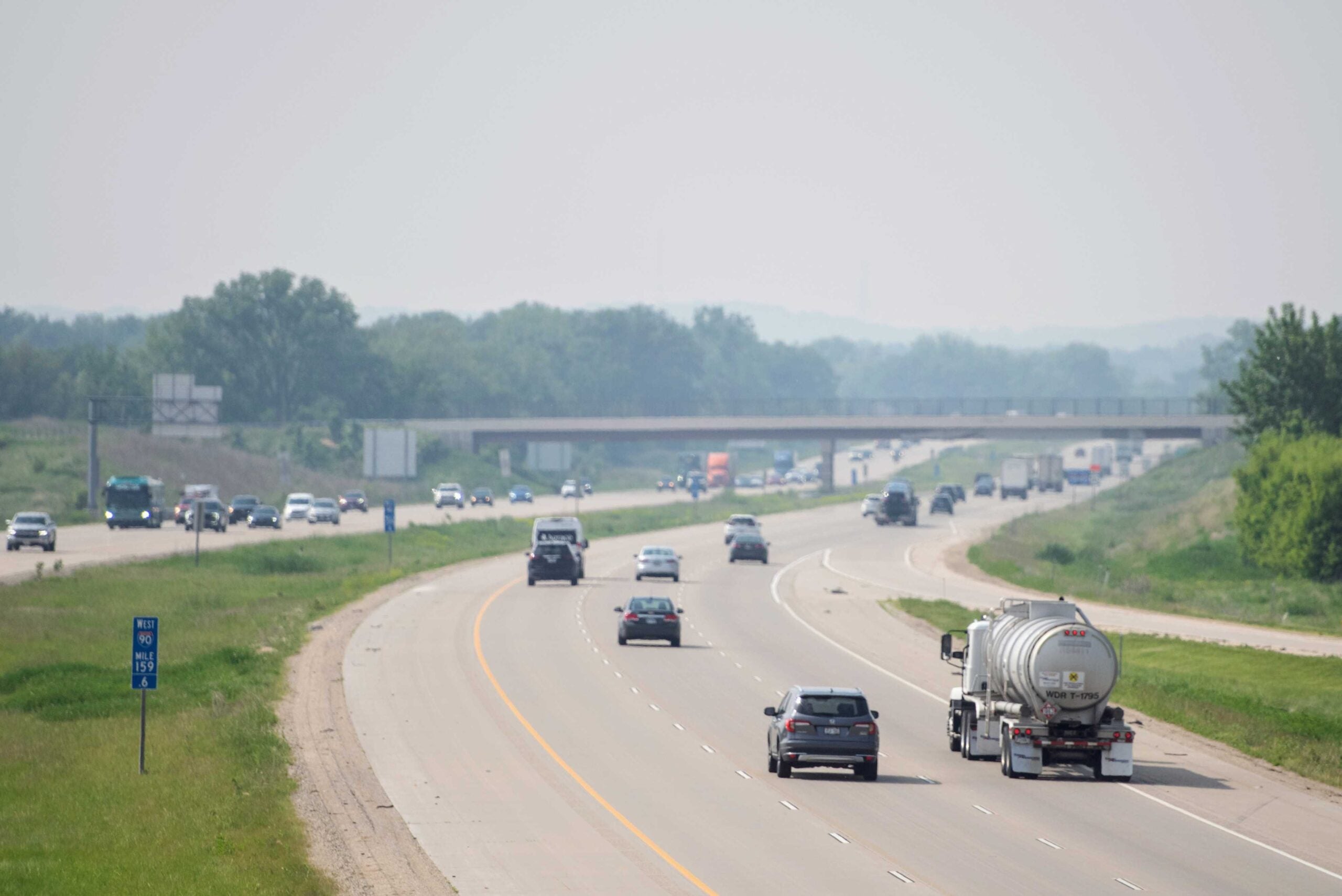The air quality across portions of Wisconsin has been labeled “very unhealthy” and “hazardous” and is among the worst in the nation due to smoke from Canadian wildfires.
The Wisconsin Department of Natural Resources issued a statewide air quality advisory until Thursday because of the smoke, which for weeks has been impacting the daily lives of millions of people across thousands of miles. The DNR said the most significant health impacts in the state are anticipated between Tuesday afternoon and noon Wednesday.
The website IQAir.com, which tracks air quality across the world, listed Milwaukee as having the second-worst air quality in the nation Tuesday morning. Brookfield, a suburb of the city, had the worst air quality in the nation Tuesday afternoon, according to that website.
News with a little more humanity
WPR’s “Wisconsin Today” newsletter keeps you connected to the state you love without feeling overwhelmed. No paywall. No agenda. No corporate filter.
“Milwaukee is currently experiencing some of the highest levels of air pollution not just in the U.S., but across the globe right now,” said Craig Czarnecki, outreach coordinator for the DNR’s air management program, during a media briefing Tuesday.
Czarnecki said the majority of the state is experiencing “unhealthy” air quality, while some counties in southeast Wisconsin are experiencing “very unhealthy” air quality levels.
Tuesday afternoon, Waukesha County had an Air Quality Index of 323, while Milwaukee County was at 211. The higher that number, the more dangerous conditions are. The United States Environmental Protection Agency says an Air Quality Index of 101 to 150 can be unhealthy for those with some health conditions, 151 to 200 is unhealthy for the general public, while 201 to 300 is “very unhealthy” for everyone. Anything aboive 300 is “hazardous.”
“This is a dynamic situation, and conditions may change rapidly over the next few days,” the DNR stated. “It is important to pay close attention to the air quality in your area and take action, especially if you don’t feel well.”
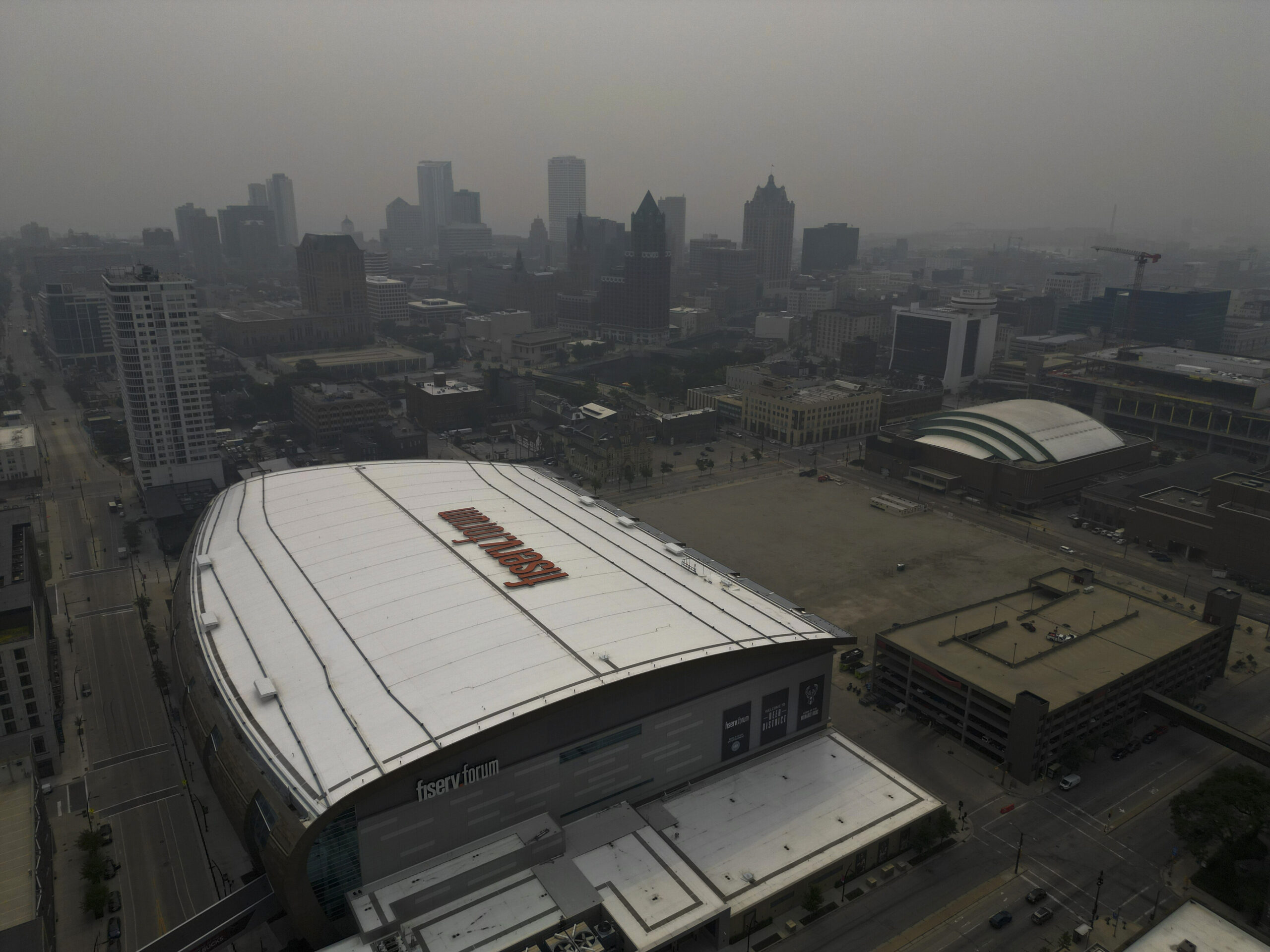
During the advisory, the DNR said it’s important to stay indoors if possible, especially for people with heart or lung issues, people with asthma, children and the elderly. Czarnecki said conditions across the state should improve on Thursday.
“Things like coughing or shortness of breath would be signs to take it easy, take a break and head inside,” Czarnecki said.
Carissa Hoium, the environmental health program leader at the Children’s Health Alliance of Wisconsin, urged everyone to take the advisory seriously.
“In that smoke are tiny particles, that we then are breathing in, and they can end up in our lungs and even get into our bloodstream,” Hoium said.
According to the EPA, exposure can lead to worsening asthma, increased respiratory problems and even premature death in people with lung or heart disease. Hoium also said the conditions pose dangerous risks to all children. A spokesperson for Children’s Wisconsin said the hospital’s emergency department has seen an increase in patients with respiratory issues this week.
“All kids are kind of at higher risk, because kids spend a lot of time outdoors, they have increased breathing rates … they tend to breathe through their mouths, and they breathe in more air per their body weight,” Hoium said.
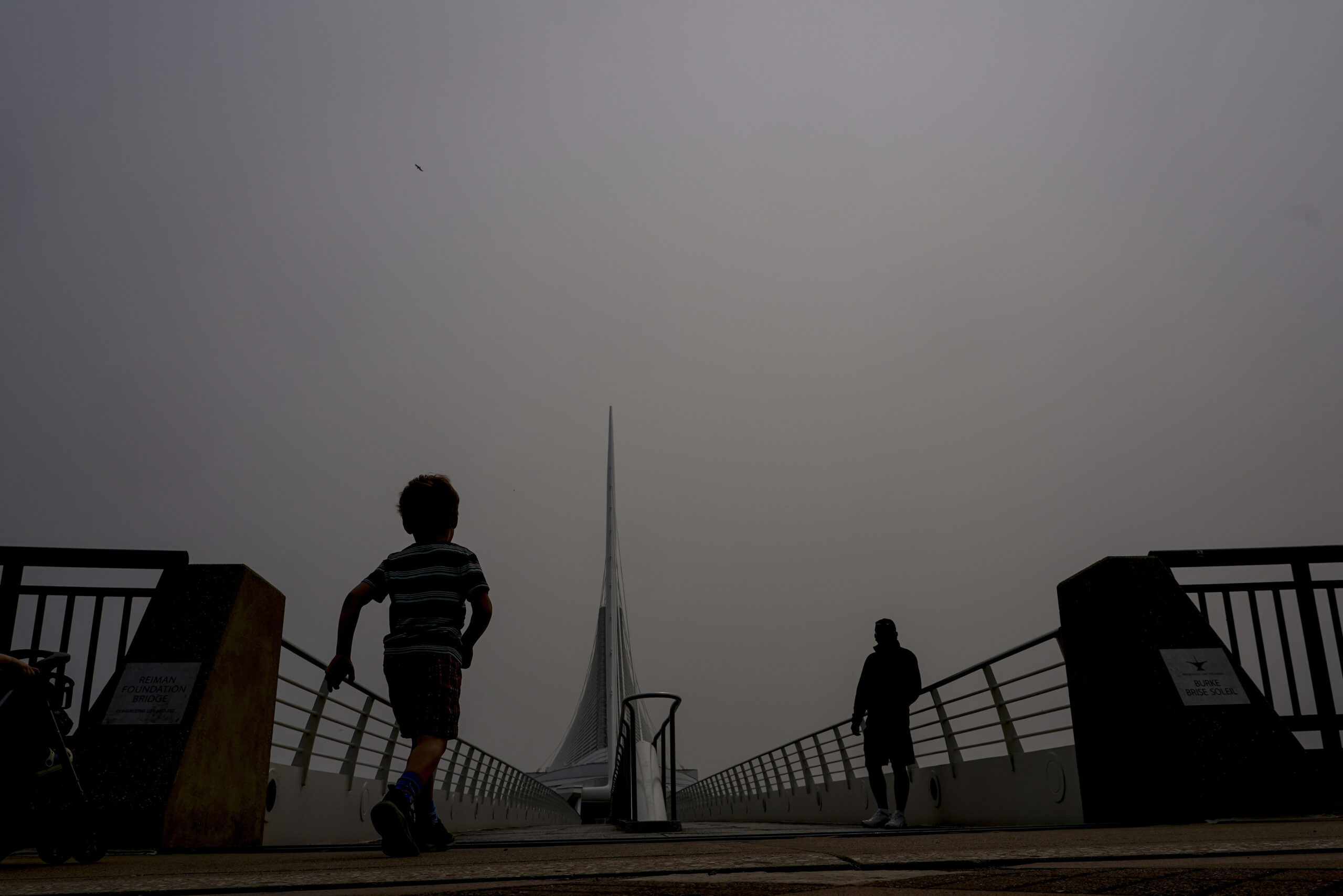
Ron Schneider, a fire specialist with the DNR, said there are still “hundreds” of fires raging across Canada’s northern provinces. The country had 488 active fires burning as of Tuesday afternoon, according to the Canadian Interagency Forest Fire Centre.
“A lot of these fires that are burning are in areas where they either can’t extinguish the fires, because they’re in such remote areas, or they just don’t have the staff,” Schneider said.
Wildfire smoke typically affects Wisconsin later in the summer, but this year the impacts are being seen earlier than normal. Czarnecki didn’t rule out the possibility that similar advisories could occur as the summer goes on.
“As long as those fires unfortunately keep burning, there will be more chances to have more advisories like this,” he said. “A lot of it depends on the weather, and weather patterns and which way that smoke gets blown by weather systems.”
In Milwaukee, the smell of smoke lingered throughout the city.
“It’s just that we have this big concentration of smoke, you can see how hazy it is too, so it doesn’t surprise me that we’re able to smell those odors because of how thick and heavy that smoke is across Wisconsin,” Czarnecki said.
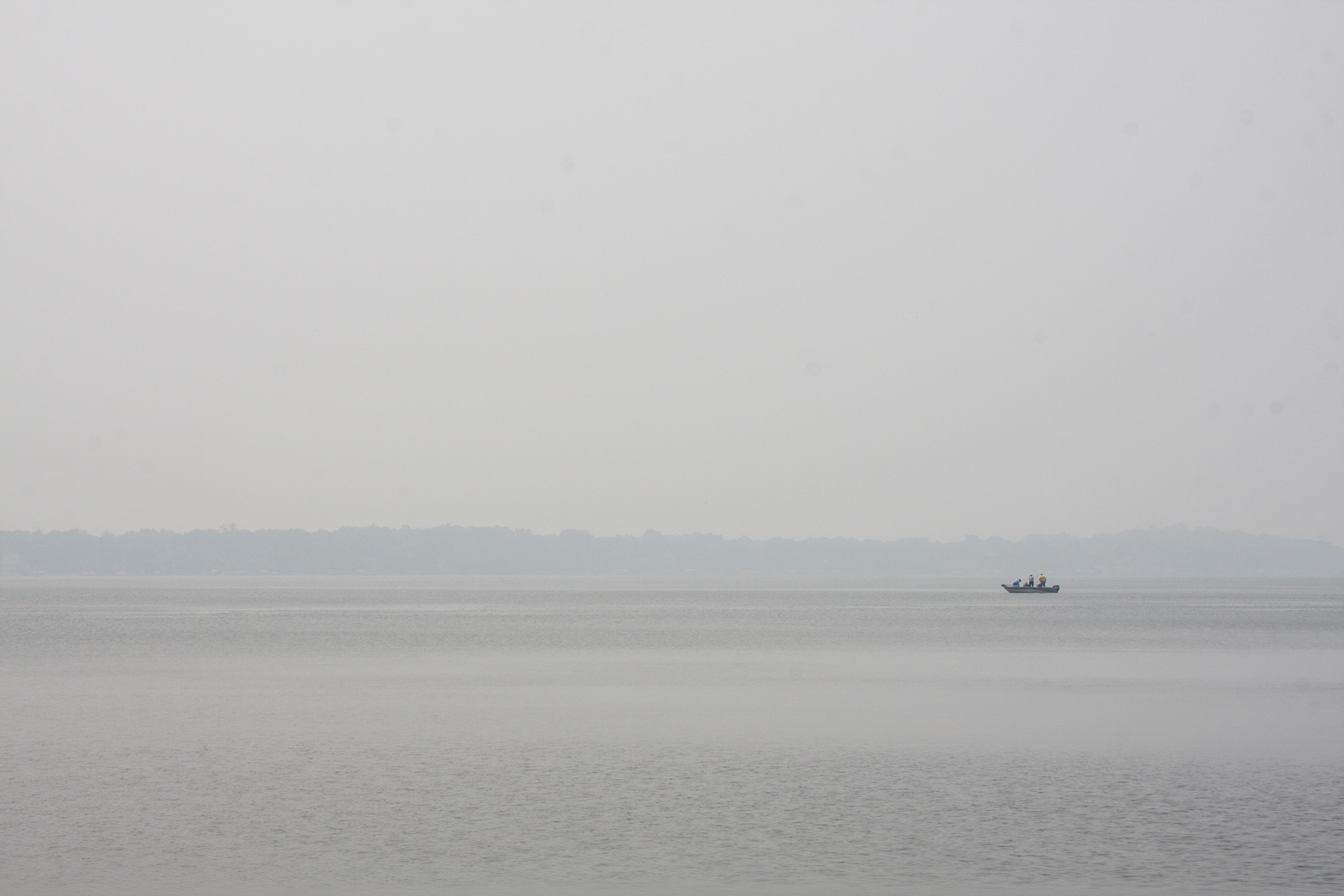
The wildfires and subsequent smoke have underscored the role climate change is having on air quality and public health. Clean Wisconsin, an environmental action group, said it’s troubling that many Wisconsinites are being asked to stay inside during a time when so many flock outside.
“We cannot accept this as our new normal in Wisconsin,” Clean Wisconsin program director Chelsea Chandler said in a statement. “The public health threat that we’ve been enduring for weeks must be a wakeup call for policymakers. Fires in places like Canada and the western United States are both products and causes of climate change. There is action we can take right now to ensure that Wisconsin is part of the climate solution.”
Wisconsin Public Radio, © Copyright 2025, Board of Regents of the University of Wisconsin System and Wisconsin Educational Communications Board.

